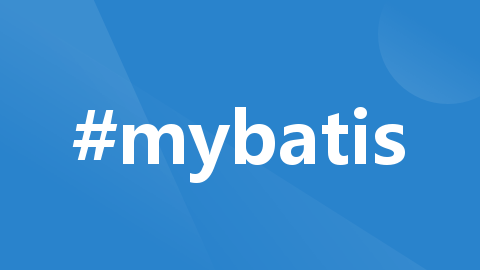
mybatis-plus 根据任意字段saveOrUpdateBatch
mybatis-plus 根据任意唯一约束批量插入或更新操作
一键AI生成摘要,助你高效阅读
问答
·
使用场景
mybatisplus Iservice接口下的saveOrUpdateBatch方法默认是根据主键来决定是要更新还是插入的,如果要根据其他字段(必须是唯一约束,唯一约束字段可以是多个)更新的话,则需要在项目的service层重写该方法。
方法源码
@Transactional(
rollbackFor = {Exception.class}
)
public boolean saveOrUpdateBatch(Collection<T> entityList, int batchSize) {
TableInfo tableInfo = TableInfoHelper.getTableInfo(this.entityClass);
Assert.notNull(tableInfo, "error: can not execute. because can not find cache of TableInfo for entity!", new Object[0]);
String keyProperty = tableInfo.getKeyProperty();
Assert.notEmpty(keyProperty, "error: can not execute. because can not find column for id from entity!", new Object[0]);
return SqlHelper.saveOrUpdateBatch(this.entityClass, this.mapperClass, this.log, entityList, batchSize, (sqlSession, entity) -> {
Object idVal = ReflectionKit.getFieldValue(entity, keyProperty);
return StringUtils.checkValNull(idVal) || CollectionUtils.isEmpty(sqlSession.selectList(this.getSqlStatement(SqlMethod.SELECT_BY_ID), entity));
}, (sqlSession, entity) -> {
MapperMethod.ParamMap<T> param = new MapperMethod.ParamMap();
param.put("et", entity);
sqlSession.update(this.getSqlStatement(SqlMethod.UPDATE_BY_ID), param);
});
}
从源码中可以看出实现saveOrUpdateBatch的主要方法就是SqlHelper.saveOrUpdateBatch
public static <E> boolean saveOrUpdateBatch(Class<?> entityClass, Class<?> mapper, Log log, Collection<E> list, int batchSize, BiPredicate<SqlSession, E> predicate, BiConsumer<SqlSession, E> consumer) {
String sqlStatement = getSqlStatement(mapper, SqlMethod.INSERT_ONE);
return executeBatch(entityClass, log, list, batchSize, (sqlSession, entity) -> {
if (predicate.test(sqlSession, entity)) {
sqlSession.insert(sqlStatement, entity);
} else {
consumer.accept(sqlSession, entity);
}
});
}
该方法的最后两个参数predicate,consumer
predicate 这个函数是用于判断是否要进行插入操作 true插入,false:则通过consumer 函数执行更新
方法改造
注意:写在项目操作对应表的service层
首先在service层定义接口
boolean saveOrUpdateBatchByAgentIdAndPeriodAndType(List<Entity> list);
类为数据库表对应的实体类,agentId,period,type,这个三个字段为表的唯一约束,即当表中存在这三个字段组合对应的记录时则进行更新操作,不存在则进行插入操作
service层接口实现
@Transactional(rollbackFor = Exception.class)
@DS("XXXX")//如果为多数据源,这里要指明具体操作的数据源名称
public boolean saveOrUpdateBatchByAgentIdAndPeriodAndType(List<Entity> list) {
return SqlHelper.saveOrUpdateBatch(entityClass, this.mapperClass, super.log, list, DEFAULT_BATCH_SIZE, (sqlSession, entity) -> {//这里主要是查询唯一约束对应的记录是否存在
LambdaQueryWrapper<Entity> queryWrapper = Wrappers.<Entity>lambdaQuery()
.eq(Entity::getAgentId, entity.getAgentId()).eq(Entity::getPeriod,entity.getPeriod())
.eq(Entity::getType,entity.getType());
Map<String, Object> map = CollectionUtils.newHashMapWithExpectedSize(1);
map.put(Constants.WRAPPER, queryWrapper);
return CollectionUtils.isEmpty(sqlSession.selectList(getSqlStatement(SqlMethod.SELECT_LIST), map));
}, (sqlSession, entity) -> {
LambdaUpdateWrapper<Entity> lambdaUpdateWrapper = new LambdaUpdateWrapper<>();
lambdaUpdateWrapper.eq(Entity::getAgentId, entity.getAgentId()).eq(Entity::getPeriod,entity.getPeriod())
.eq(Entity::getType,entity.getType());
Map<String, Object> param = CollectionUtils.newHashMapWithExpectedSize(2);
param.put(Constants.ENTITY, entity);
param.put(Constants.WRAPPER, lambdaUpdateWrapper);
sqlSession.update(getSqlStatement(SqlMethod.UPDATE), param);
});
}
非批量的saveOrUpdate也可以按照这种方式进行改造
更多推荐
 已为社区贡献1条内容
已为社区贡献1条内容










所有评论(0)